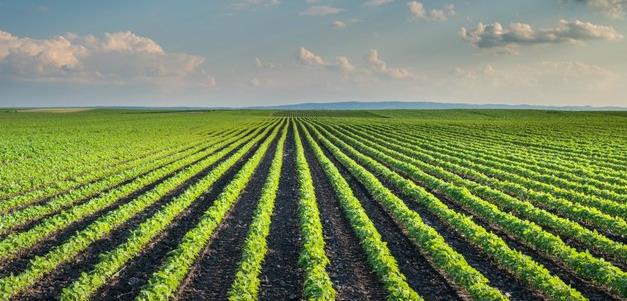Arkansas Agriculture Secretary thinks dicamba will remain a divisive issue in 2018
by January 9, 2018 5:09 pm 491 views

The Arkansas State Plant Board has decided to keep its April 15 deadline for dicamba use in Arkansas, and now it will be up to the Arkansas Legislative Council’s Administrative Rules and Regulations Subcommittee to determine if the regulation will be enforced or changed.
Arkansas Agriculture Secretary Wes Ward told Talk Business & Politics he is unsure what legislators will decide. It was the most explosive issue during the 2017 growing season and it will continue through this year no matter what regulations are passed.
“I think Arkansas will be in the (national) spotlight again,” Ward said.
The subcommittee will meet Jan. 16 to consider the regulatory change. The change was held during a meeting in December after several legislators raised concerns about use dates. The subcommittee asked ASPB to consider three separate criteria in any revision of the rule. ASPB was asked to consider scientific-based evidence; a dividing line to create north and south use zones across the Delta; ambient temperature and humidity applicable to temperature inversion during night hours.
Changes might include a later ban date in May or June, creating zones within in the state where it can be used later in the season, temperature considerations, and others.
A task force, appointed by Gov. Asa Hutchinson established the deadline, and the ASPB ultimately decided to go with that recommendation, Ward said. Many in the state thought the issue would have been decided by now. Farmers typically make growing input decisions, such as what herbicide to use months before the planting season begins. Companies typically offer rebates and special deals for farmers who make decisions earlier, and its likely some of those cost-saving deals are no longer available, Ward said.
Farmers have been deeply divided on dicamba.
ASPB made the decision to ban dicamba after it received about 1,000 damage complaints, primarily in Northeast Arkansas, starting in May potentially caused from dicamba drift.
The decision was controversial, but the board decided the risks were too significant in imposing the ban and steeper penalties for misuse. The herbicide is a proven pig weed killer, one of the strongest nuisance weeds in the Delta. A contingent of farmers have argued the herbicide is the best option for weed control.
“It has been a very divisive issue. It has been a very difficult issue,” Ward said.
Dicamba has been banned in several states. Dicamba has been used as an herbicide for more than 50 years to manage 200 broad leaf weeds. It is a Weed Science Society of America Group 4 synthetic auxin – a plant hormone that causes plants to exhibit uncontrolled growth, according to the University of Arkansas. It is more volatile in warmer climates.
ASPB decided earlier this year to allow one formulation, Engenia dicamba, to be used in the state to fight pig weed, an aggressive weed that has plagued farmers in recent years. About 35% of the state’s 3.5 million soybean acres were planted with genetically-altered dicamba tolerant seeds. About 75% (300,000 acres) of the state’s cotton crop was planted with dicamba resistant seeds.
Scientists theorized dicamba was drifting into adjacent crop fields, gardens, and other places. Misapplications, weather conditions, or some other unknown factors may have caused the alleged drift. Tests proved the new formulations were less volatile than older ones, but there was still volatility, and it could last up to 36 hours after it was sprayed. Dicamba can attach to dust particles, meaning it can travel much further from target sites than previously thought.
Some additives enhanced the volatility. Ammonium sulfate and glufosinate increase the damage capabilities of dicamba. Researchers found damage could spread up to 220 feet away from an application site, nearly double the buffer distance the Environmental Protection Agency requires between dicamba and non-dicamba fields. Tests showed that if the wind blew in one direction for several hours, drift could cause damage on adjacent fields and then if the wind changed hours later, the same amount of damage would be caused there.
Ward isn’t sure what will happen during the meeting Jan. 16, but a decision needs to be made soon. Farmers will head to the fields in just a few months, and they need to know what options will or will not be available, he said.
